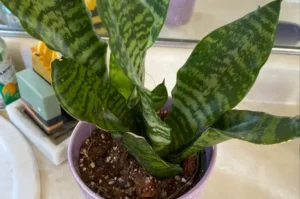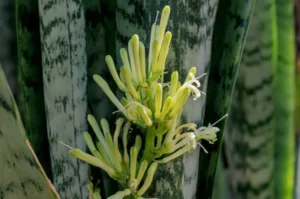Snake plants, also known as Sansevieria or Dracaena trifasciata, are among the easiest indoor plants to care for. While their upright, sword-like leaves get most of the attention, their root system plays a crucial role in overall health and longevity. If you’re wondering what healthy snake plant roots should look like, you’re in the right place.
Understanding your snake plant’s root health can help you avoid problems like root rot, stunted growth, or leaf yellowing. Let’s dig into what healthy roots look like and how you can keep them that way.
What Are Snake Plant Roots Like?
Snake plant roots are shallow and fibrous. Unlike plants with deep taproots, snake plants grow roots close to the surface. They also develop thick, orange to white rhizomes, which are horizontal stems that spread beneath the soil and help the plant multiply.
There are two main parts to the snake plant root system:
- Fibrous roots – These are thin, string-like roots that absorb water and nutrients.
- Rhizomes – These are fleshy, horizontal root structures responsible for propagation and energy storage.
Characteristics of Healthy Snake Plant Roots
To ensure your snake plant is thriving, here are the signs of healthy roots to look for:
1. Color
Healthy snake plant roots are:
- Creamy white to light tan in color.
- Rhizomes may appear orange or yellowish-white.
Discoloration like brown or black roots, is usually a sign of rot or disease.
2. Texture
Healthy roots feel firm and slightly moist, not mushy or brittle. They should have a smooth surface without any soft or slimy spots.
3. Smell
There should be no foul odor. A healthy root system smells earthy and clean. A sour or rotten smell indicates root rot.
4. Growth Pattern
Healthy roots spread evenly throughout the pot. If the roots circle around tightly or poke out of the pot’s drainage holes, it may be time to repot the plant.
What Unhealthy Snake Plant Roots Look Like
If your plant is struggling, you might notice:
- Brown, black, or grey roots
- Soft, mushy texture
- Foul smell
- Lack of root growth or broken rhizomes
These are usually symptoms of overwatering, poor drainage, or a fungal infection like Pythium root rot.
How to Check Snake Plant Roots
If you’re not sure about your plant’s root health, here’s how to check:
- Gently remove the plant from its pot.
- Shake off excess soil or rinse the roots with lukewarm water.
- Inspect the roots for color, texture, and smell.
- Use sterile scissors to trim off any dead or rotting roots.
After inspection, you can repot the plant into fresh, well-draining soil.
Tips to Keep Snake Plant Roots Healthy
Follow these simple tips to promote healthy root development:
Use Well-Draining Soil
Use a cactus or succulent mix, or make your own using:
- 2 parts potting soil
- 1 part perlite
- 1 part sand
Avoid Overwatering
Water only when the soil is completely dry. Overwatering is the leading cause of root rot.
Choose the Right Pot
Use pots with drainage holes and avoid plastic containers that trap moisture.
Repot Every 2–3 Years
Repotting gives roots more space to grow and reduces the chance of root-bound stress.
Watch for Root Rot
If you notice drooping leaves or a bad smell, inspect the roots immediately.
Conclusion
Healthy snake plant roots are the hidden heroes of a thriving plant. By understanding what they should look like (white or orange, firm, and odorless), you can ensure your plant stays strong from the ground up. Proper watering, good drainage, and occasional root checks are all you need to keep your snake plant’s root system in top shape.
If you’re ever in doubt, gently inspect the roots and trust your senses; color, texture, and smell will tell you everything you need to know.






